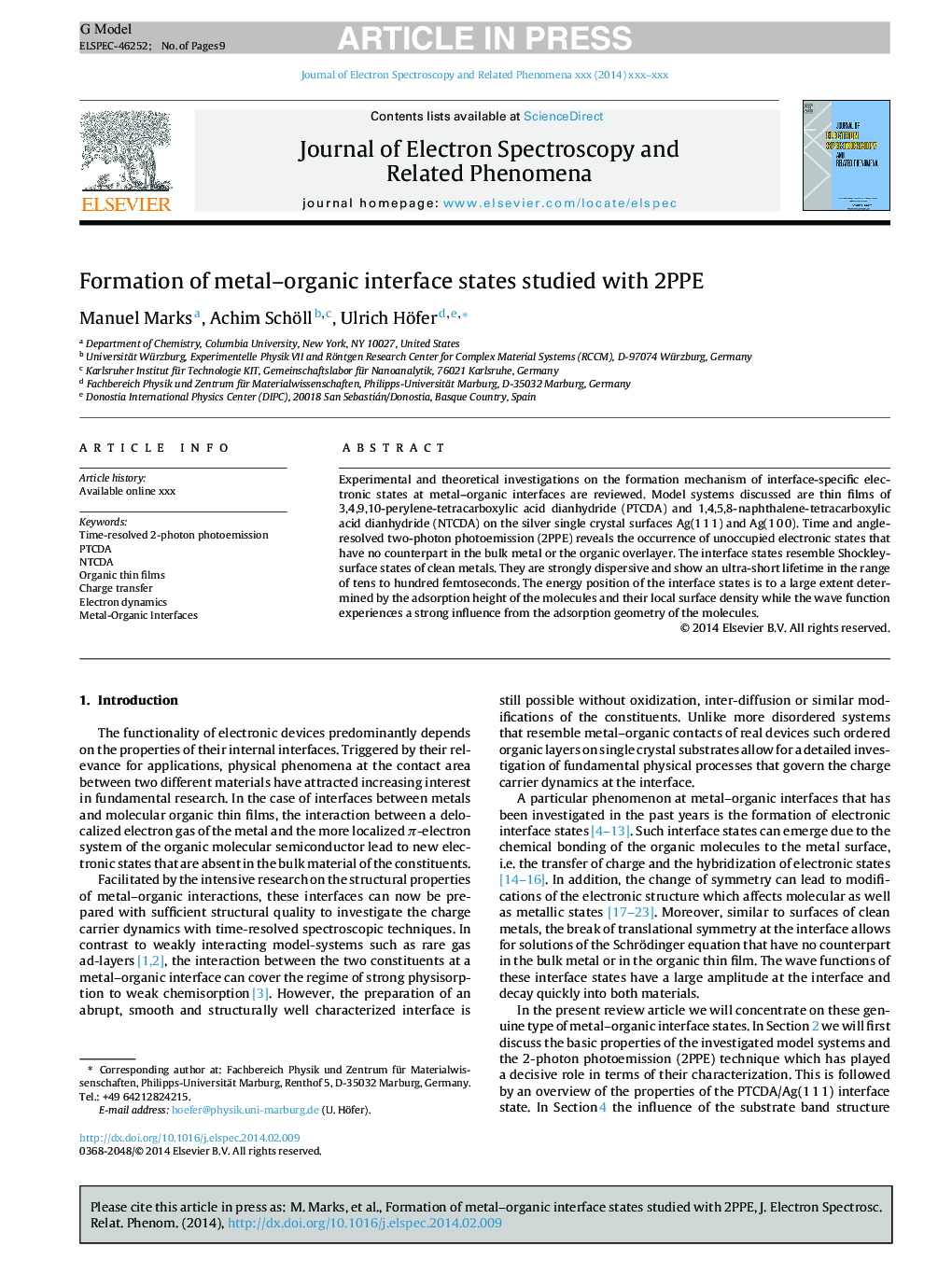| Article ID | Journal | Published Year | Pages | File Type |
|---|---|---|---|---|
| 5395996 | Journal of Electron Spectroscopy and Related Phenomena | 2014 | 9 Pages |
Abstract
Experimental and theoretical investigations on the formation mechanism of interface-specific electronic states at metal-organic interfaces are reviewed. Model systems discussed are thin films of 3,4,9,10-perylene-tetracarboxylic acid dianhydride (PTCDA) and 1,4,5,8-naphthalene-tetracarboxylic acid dianhydride (NTCDA) on the silver single crystal surfaces Ag(1Â 1Â 1) and Ag(1Â 0Â 0). Time and angle-resolved two-photon photoemission (2PPE) reveals the occurrence of unoccupied electronic states that have no counterpart in the bulk metal or the organic overlayer. The interface states resemble Shockley-surface states of clean metals. They are strongly dispersive and show an ultra-short lifetime in the range of tens to hundred femtoseconds. The energy position of the interface states is to a large extent determined by the adsorption height of the molecules and their local surface density while the wave function experiences a strong influence from the adsorption geometry of the molecules.
Related Topics
Physical Sciences and Engineering
Chemistry
Physical and Theoretical Chemistry
Authors
Manuel Marks, Achim Schöll, Ulrich Höfer,
